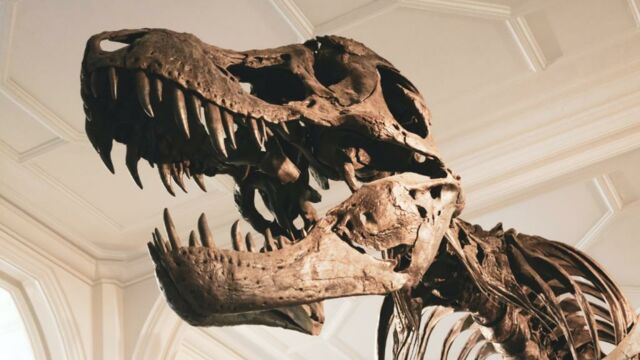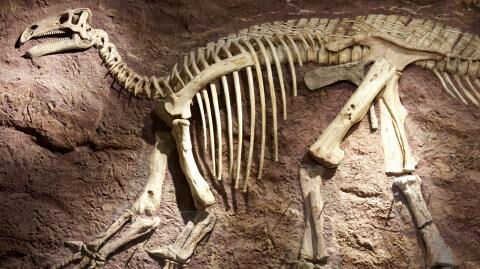These Mantellisaurus footprints were found by engineers on the beach to carry out flood control plans for houses in the towns of Shanklin and Yaverland, and fossilized there between the café, bus stop and parking lot on this beach on the Isle of Wight in the south of the UK.
Discover our latest podcast
Traces of Mantellisaurus
Thanks to its climate, variety of landscapes and beaches, the Isle of Wight has always been a popular tourist destination. A 105 km coastal path circles the island, offering spectacular views of hills, cliffs and sea, to the extent that it is often referred to as 'England in miniature'. In addition to its attractive scenery, the island has been known to paleontologists and enthusiasts since November 2008, when a fossil of a new species of pterosaur, Vectidraco daisymorrisae, was discovered on the island.
This is not the first time that the shadow of dinosaur reign has hovered over this small UK island. This time, initial observations suggest traces of Mantellisaurus, a dinosaur that lived in Europe, notably in Belgium and England, between 120 and 145 million years ago. This dinosaur is known to have been a herbivore, measuring between six and seven meters in length, and weighing around 700 kilos.
A set of well-preserved dinosaur footprints have been uncovered on an Isle of Wight beach https://t.co/fxk5ZIIdqE
— BBC South (@BBCSouthNews) October 24, 2023
Read more:Huge footprints have been discovered due to ongoing droughts (PHOTO)
An island particularly rich in such discoveries
According to a BBC article, Dr. Martin Munt, curator of the Isle of Wight Dinosaur Museum in Sandown, noted that the Isle of Wight is the richest dinosaur site in Europe to date. So, while such discoveries may not be as 'exceptional' as they might be in other parts of Europe, they are nonetheless marvellous. He explains:
We can't be totally sure of the identity of a footprint, but the three-toed feet make it likely that a Mantellisaurus was present here, and not just in other parts of the south coast where they were more common - at least that's what we thought until now.
A Mantellisaurus skeleton is currently on display at the Natural History Museum. It was discovered on the Isle of Wight in 1917. It is still one of the most complete dinosaur skeletons in the UK.
Read more:What would dinosaurs look like if they were on Earth today?
This article has been translated from Gentside FR.
Sources used:
Ouest-France: Entre le café et l’arrêt de bus, ils trouvent des empreintes de dinosaure de 130 millions d’années
BBC: Dinosaur footprints exposed on resort's beach















